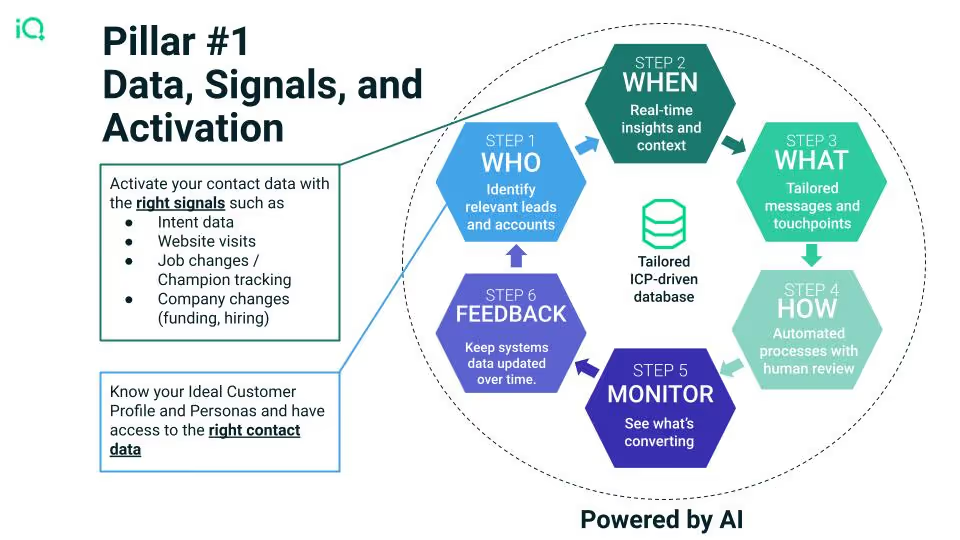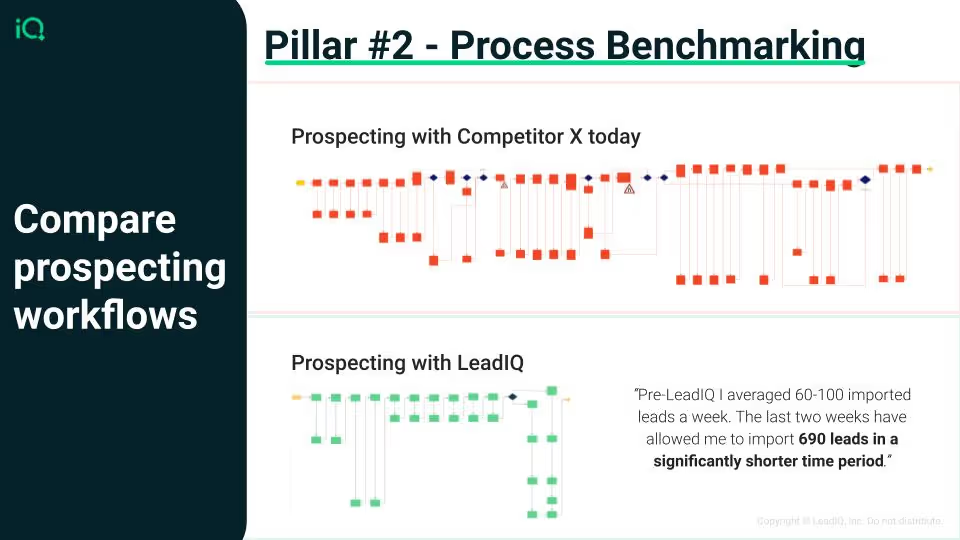Ready to create more pipeline?
Get a demo and discover why thousands of SDR and Sales teams trust LeadIQ to help them build pipeline confidently.





Get a demo and discover why thousands of SDR and Sales teams trust LeadIQ to help them build pipeline confidently.
Earlier this year, the LeadIQ team was thrilled to be able to participate in OpsStars, an annual event sponsored by LeanData and Salesloft that brings revenue-focused ops professionals and leaders together to share knowledge and discuss solutions to common challenges.
During the event, Mei Siauw, LeadIQ’s co-founder and CEO, hosted a workshop called “Come on Barbie, Let’s Go Party… with Better Data Activation, Process Benchmarking, and Automation.” I was excited to have the opportunity to participate alongside:
During the workshop, we had a robust conversation about how to activate contact data most effectively, why it’s important to map prospecting and pipeline-generation processes and optimize them, and how sales teams can automate time-consuming, low-value responsibilities.

Mei kicked off the workshop by talking about Barbie.
When Barbie was introduced in 1959, she was not the typical doll. At the time, most dolls were babies, and they were made to prepare young girls for one of the most obvious jobs they could fulfill at the time: a mother.
Back then, there weren’t many women in the workforce. But over the years, Barbie has had 250 different careers; she’s been a surgeon, an astronaut, and even a presidential candidate, inspiring countless children that they could be anything they wanted to be when they grew up.
In other words, the way Mei sees it, Barbie represents endless possibilities.
In the same vein, there are endless possibilities when it comes to pipeline generation. You might just have to ditch the proverbial baby doll and embrace the modern Barbie to unlock them.
Mei launched the workshop by sharing the results of a recent study, which revealed that win rates have been steadily declining this year from 26% to 17%. As a result, sales teams are under a lot of pressure to accelerate pipe generation.
One of the reasons this is happening is because the marketing and sales automation space is on fire. According to Mei, while there were 5,000 vendors just five years ago, there are more than 11,000 today. This makes it harder for SaaS sales reps in the industry to command the attention of prospects. In fact, the average rep has just a 2% connect rate — which is one of the main reasons pipe gen is getting more difficult.
To overcome these challenges, 71% of organizations are planning to double down on their outbound activities, according to SaaStr research. In fact, these organizations expect anywhere between 30% and 50% of their revenues will come from outbound efforts.
With pipeline generation becoming more challenging and outbound sequences becoming more important, sales teams need to optimize their processes to get the best results. To do that, Mei suggested, they need to embrace the three key pillars of pipeline generation.
Success with outbound outreach starts with B2B data activation and being able to reach the right person with the right message at the right time. This is easiest to achieve when you have highly accurate data.
“Data is only as good as it is entered,” Melinda said. “So, the SDR, the BDR, even the AE has turned into much more than just dialing all day long. They’re no longer just a hunter; they’re now an analyst, a detective.”
When you have complete confidence and trust in your data, it’s that much easier to leverage all the sales intelligence, intent indicators, and sales buying signals you have at your disposal. As a result, sales teams can be considerably more strategic about their outreach.

At LeadIQ, part of our onboarding flow involves doing an exercise with customers around B2B process mapping and benchmarking. We sit down with a typical user and ask them to walk us through one of their processes.
For us, that process is usually from identifying someone that they want to target after they’ve gotten those intent signals all the way through actioning on the data and actually doing the favorite part of their job: the selling part that they like. Of course, we know that the process of getting data into an actionable state can be tough for reps, and we want to make it as efficient as possible.
To do that, we conduct sales process mapping exercises, which help us identify any procedural breakdowns. When our team interviews multiple users, we might find out that they are doing things differently.
We look for any “swivel chair” moments, where users go from one platform to another to cross-check something. By focusing on eliminating task and system switching, our team helps sales reps save a lot of clicks.
In Tony’s experience, sales reps have more tools at their disposal than ever before. Anything that can be done to streamline workflows can have a major impact on outbound success.
“How much of those hours are going to be spent actually actioning the calls and doing emails versus just the admin portion of it?” he asked. “Just having something that you can click a button and it puts them into the right sequence, you’re skipping a lot of time.”

Even if you have the right data, the right signals, and the right processes, it can still be hard to generate pipeline when you’re bogged down by manual processes.
By automating clunky workflows, sales teams can achieve more with less. This is why the LeadData team is laser-focused on automation.
“We try to automate everything we possibly can,” Rob added. “We are very happy we found Scribe, LeadIQ’s email AI tool for personalizing emails. That automation gain has been huge for us.”
By streamlining your tech stack and automating the right processes, your sales reps can spend a lot more time doing what they do best: selling.

We had a great time participating and learning at OpsStars this year, and we’re looking forward to joining in on the fun in 2024.
Since you’re reading these words, you understand the challenges ahead for SaaS sales reps. Facing increased competition and decreasing win rates, many sales teams are reinventing their approach and putting more weight into outbound — which many organizations are looking to as a bigger and bigger driver of revenue.
All of this begs the question: How will your team generate more pipeline in a field that gets more challenging every day?
For more tips on how to supercharge pipeline generation activities, check out the workshop in full: